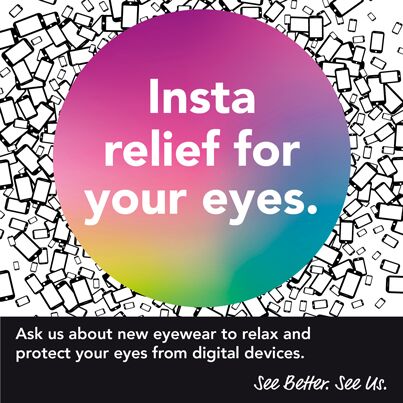“Digital Eye Strain” a new condition of the modern age

2 in 3 people suffer from Digital Eye Strain
Australians are leading world consumers of tablets, smartphones and computers, with 80% of Australians now owning and using a smartphone. Australians spend an average of 10 hours and 24 minutes on digital devices every day
Collectively, we look at our smartphones more than 440 million times a day2, and 75% of us regularly engage in multi-tasking across multiple screens and devices.
The digital age has changed the way we work, learn, shop, socialise and relax; however, our eyes are not accustomed to the changes of the modern age and it is taking a toll on many of us. The proliferation of devices and growing usage rates creates the question; how will our vision adapt to our relatively newfound habits?
In response, L&F Eyecare is launching a local campaign to create awareness in the community that extended device usage may lead to a condition referred to as “Digital Eye Strain”.
Recent studies show that as many as 65% of digital device users experience digital eye strain symptoms with approximately 75% of people, who use two or more devices simultaneously, affected. Digital Eye Strain is the physical eye discomfort felt by many individuals after two or more hours in front of a digital screen. Symptoms can include: eye strain/fatigue, dry/itchy/burning or red eyes, blurred vision, headaches and neck/shoulder/back pain.
So how are smart phones, tablets, computers and multi-device use causing digital eye stain?
- Our eyes are focusing more intensively, switching frequently between devices and adjusting to increasingly smaller, pixelated characters;
- The smartphone has created a new ‘ultra near’ vision zone, placing even greater demands on our eyes;
- The normal blinking rate is often reduced from 17 or more blinks a minute to 12 to 15 blinks, affecting tear production5;
- Digital devices are backlit and emit blue light, causing eye strain as well as being linked to disrupted sleeping patterns;
- Posture is changing as we lean towards screens or slouch in chairs, placing additional strain on the neck and back.
Studies show that a large proportion of the community is likely to suffer from one or more symptoms of digital eye strain, but many will not even be aware that this condition exists.
This is where we come in, as we can prescribe the latest innovative technology to alleviate the symptoms of digital eye strain.
Digital use lenses eliminate glare, filter out blue light and prevent vision fatigue and the good news is that we can help both prescription wearers and non-prescription wearers.
Our recommendation is tailored to an individual’s digital environment, device usage and the type of work they do.
As part of the “Digital Eye Strain” campaign L&F Eyecare is urging people, regardless of whether they currently wear glasses, to take the time and recognise whether they have digital eye strain symptoms. Understanding the impact of digital device usage on an individual’s eyes is one aspect that our Optometrists will discuss with you as part of the practice’s thorough 360° comprehensive eye consultation.
- Ernst & Young (2016). Digital Australia. Sydney, NSW.
- Deloitte (2015). Mobile Consumer Survey – The Australian Cut. Sydney, NSW.
- Nielsen (2015). Mobile Rating Report. Sydney, NSW.
- Eyes Overexposed: The Digital Device Dilemma, 2016 Digital Eye Strain Report, The Vision Council, USA
- Computer Vision Syndrome Affects Millions, J. Brody, NY Times May 30, 2016
- Eyes Overexposed: The Digital Device Dilemma, 2016 Digital Eye Strain Report, The Vision Council, USA

